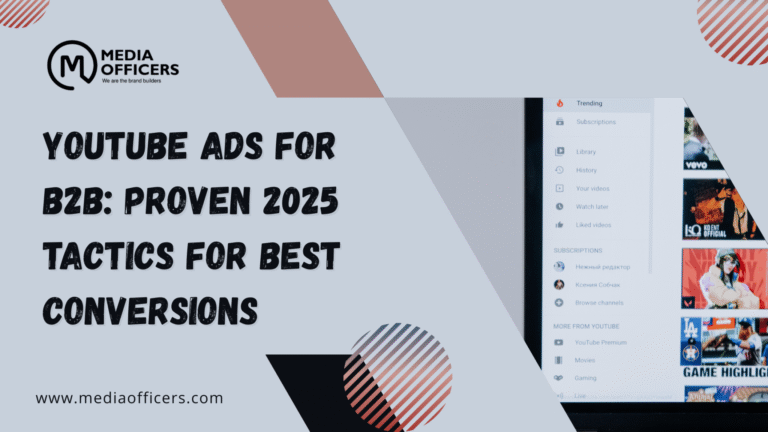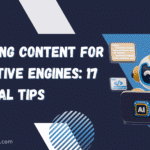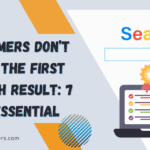Campaign Type in Google Ads Channel Performance report is signaling a shift in how Google consolidates cross-network performance data, moving beyond the current scope of Performance Max campaigns. This quiet change sets the stage for a unified cross-network view advertisers have long requested and debated. The update arrives with other boosts like ROAS and CPA in the Channel Performance and Asset reports, yet the most telling signal is the appearance of a new, currently non-functional attribute that hints at bigger moves ahead.
In practice, the emergence of this attribute suggests Google may be preparing to extend Channel Performance coverage beyond Performance Max campaigns. The industry has tracked a tooltip stating that channel performance data is only available for Performance Max campaigns at this time, and the new Campaign Type attribute aligns with those hints. The result could be a broader, cross-network reporting experience that provides actionable insights across multiple campaign types rather than a PMax‑only lens.
For now, the feature is not yet fully functional. Nevertheless, the presence of Campaign Type as a selectable attribute signals a deliberate architectural shift within Google Ads reporting. The move reads less like a single feature launch and more like a structural realignment aimed at unifying performance data across networks. As many PPC professionals know, this pattern mirrors past consolidations such as Search Term Insights moving into the standard Search Term report and other data sources merging over time.
Smarter Ecommerce’s Mike Ryan first spotted the update, but the implications are much broader than a single interface tweak. The industry is watching for the day when API access makes this data programmable, enabling advertisers and analysts to pull cross-network signals automatically. In short, this change sets a foundation for future expansions that could redefine how we evaluate campaigns across networks and formats.
Below, you’ll find a structured look at what this update means, how to prepare, and what to expect next from Google’s reporting suite.
What is Campaign Type in Google Ads Channel Performance report
Campaign Type in Google Ads Channel Performance report is an attribute designed to categorize data within the Channel Performance view by the underlying campaign type. Although it is currently non-functional, its existence provides a signal about future cross‑campaign visibility. In other words, expect a more granular breakdown that can merge performance insights across trialing formats, including Demand Gen, Search, Video, and other campaign types that Google may evolve to support.
Right now, the Channel Performance report delivers fresh ROI metrics like ROAS and CPA, but the segmentation by campaign type remains in the works. The practical outcome for advertisers is a clearer roadmap for allocating spend across different campaign types once the data becomes accessible via the UI and API. In the interim, marketers should watch how this attribute appears in the interface, as it often predicts forthcoming data fields and reporting capabilities.
Why this matters to advertisers
The addition of Campaign Type in Google Ads Channel Performance report matters for several reasons. First, it signals a potential expansion of the data surface beyond Performance Max campaigns, which could unlock more comprehensive cross-network insights. Advertisers who rely on cross-channel visibility will benefit from a unified view that compresses multiple data sources into a single, comparable framework.
Second, the update aligns with Google’s broader strategy to merge disparate reporting sources. As Google gradually folds elements of the Network report into Channel Performance, advertisers gain a more cohesive perspective on performance without constantly switching between reports. This reduces friction and improves the speed at which teams can derive actionable insights from their data.
Third, the anticipated API access means developers will soon be able to pull campaign type data programmatically. This is a critical capability for agencies and in-house teams that automate reporting, attribution modeling, and cross-network optimization. In practice, API access enables scheduled exports, dashboards, and custom analyses that were previously constrained by UI-only workflows.
What this could mean for roadmap and future expansions
The emergence of a selectable Campaign Type attribute is not a final feature announcement; it is a signal. The most probable first expansion is Demand Gen or other non-PMax channels, given Google’s focus on unifying cross-network visibility. If Google continues this pattern, we may see a phased rollout where additional campaign types gain access to a consolidated Channel Performance view, followed by deeper data fields like click-through patterns, conversion paths, and audience overlaps across networks.
Another likely development is stricter alignment between Asset Group reports and Channel Performance. The ability to segment Asset Group data by network has already rolled out, and this trend suggests that Google intends to harmonize data surfaces more broadly. The combined effect would be an easier, more reliable cross-network narrative for advertisers and analysts alike.
Practical implications for advertisers today
Even though Campaign Type in Google Ads Channel Performance report is not yet functional, savvy advertisers can begin preparing in several ways. First, document current expectations for cross-network visibility and define a set of metrics you want to compare across campaign types once data becomes accessible. This prepares you for faster onboarding when the data becomes available in the UI and the API.
Second, start mapping your current Performance Max performance to other campaign types you run. This interim mapping will simplify future comparisons and help you detect early signals when the new field becomes actionable. You can also start stacking ROAS and CPA analyses across different campaign types to identify early opportunities for optimization once cross-network data is fully accessible.
Roadmap implications for Demand Gen and beyond
Demand Gen is the most probable initial target for expansion because it represents a distinct category of campaigns that Google has signaled interest in merging with conventional channel data. The integration of Demand Gen insights into Channel Performance would deliver a more complete picture of user journeys across touchpoints. For marketers, this could translate into more precise budget allocations, better experimentation, and clearer attribution across networks.
While the exact timelines remain speculative, the trajectory is clear: a shift toward a more holistic channel view that reduces the friction between data silos. Expect iterative updates that expand data coverage gradually, with the Campaign Type attribute evolving from a placeholder to a core data field in the Channel Performance report.
Impact on reporting workflows and measurement strategies
As Channel Performance grows toward cross-network coverage, measurement strategies will need to adapt. Consider adopting a hybrid approach that balances UI-driven insights with API-enabled automation. In the short term, keep a close eye on how the new attribute is surfaced in your dashboards and ensure your teams are ready to re-map metrics once data becomes available.
- Consolidate ROAS and CPA benchmarks across campaign types to maintain consistent performance thresholds.
- Plan cross-network experiments that test allocation shifts based on future Campaign Type data availability.
- Prepare attribution models that can incorporate cross-type data when the API provides access to the new field.
In this transitional period, Campaign Type in Google Ads Channel Performance report is less about immediate gains and more about strategic readiness. The early visibility helps teams anticipate where to invest effort once full functionality is released.
Asset Group reporting and network segmentation
Another recent enhancement is the ability to segment Asset Group reports by network. This feature has long been requested because it unlocks deeper insights into how assets perform across different networks within PMax. When combined with the eventual cross‑campaign type coverage, advertisers will gain a more granular, end‑to‑end view of asset effectiveness across channels. This will help optimize creative and bidding strategies in a coordinated way rather than in isolated silos.
As such, the current groundwork points toward a future where Asset Group insights feed directly into the Channel Performance narrative. For advertisers, this means more reliable cross-network benchmarking and faster iteration cycles across assets, placements, and campaign types.
Preparing for API access and data integration
The possibility of API access is among the most consequential parts of this evolution. Programmable access means you can pull campaign type data, ROAS, CPA, and other key metrics into your data warehouse, dashboards, and attribution models without manual exports. Start laying the groundwork now by outlining your data schemas, naming conventions, and integration points for cross-network data when the API becomes available.
Best practices include designing idempotent processes, validating data freshness, and establishing robust error handling. If you already pull Channel Performance data, plan a fallback strategy to ensure continuity if the new campaign type field requires mapping or normalization during rollout.
How to act now: a quick-start checklist
- Review the Channel Performance report setup and note where the Campaign Type attribute will appear once functional.
- Document your cross-network goals and identify which campaign types you expect to see once data becomes accessible.
- Prepare a cross-type benchmarking plan that aligns ROAS and CPA targets across campaign types.
- Draft a lightweight API-ready data model that can ingest cross-network metrics as soon as an API is available.
Frequently Asked Questions
Will Campaign Type in Google Ads Channel Performance report replace the Network report?
Today it is still an active development area. The goal appears to be a gradual unification of data sources, not an immediate replacement. Expect a phased rollout where Channel Performance gains more cross-network visibility while the Network report is retired or harmonized over time.
When can advertisers expect API access for this data?
Google has signaled that API access is coming, but exact timelines have not been published. The best approach is to prepare your data pipelines now and stay aligned with official announcements so you can move quickly when access becomes available.
How should I plan my strategy with this evolving data surface?
Focus on building a cross-channel measurement philosophy that combines ROAS and CPA across campaign types with asset level insights. Start with a flexible dashboard that accommodates new fields and be ready to re-map attribution models as data becomes available. This proactive stance will reduce disruption when the new data fields are fully functional.
What should I do today to prepare for Demand Gen expansion?
Begin by mapping your Demand Gen objectives to existing channel metrics and identifying where cross-network visibility would most improve decision making. When Demand Gen data joins Channel Performance, you’ll want benchmarks and dashboards that compare it directly against other campaign types to optimize budget allocation and creative strategy.
In summary, the Campaign Type attribute in Google Ads Channel Performance report represents a meaningful, forward-looking step toward a unified performance view. The current non-functional state is not a blocker but a signal that Google is recalibrating how advertisers access, compare, and automate cross-network success metrics. By preparing now through mapping, benchmarking, and API readiness advertisers can hit the ground running as data becomes accessible and actionable across all campaign types.
Conclusion
The industry is watching closely as Google evolves Campaign Type in Google Ads Channel Performance report from a promising placeholder into a practical cross-network data backbone. This evolution aligns with broader moves to merge data sources, expand ROAS and CPA visibility, and unlock API access that will empower automation and deeper insights. Although the feature is not yet fully functional, its existence signals a future where advertisers can evaluate performance across campaign types in a single, cohesive Channel Performance view. Early preparation mapping data needs, planning cross-type benchmarks, and setting up automation will position teams to maximize the benefits as Google increments capability and coverage over time.








